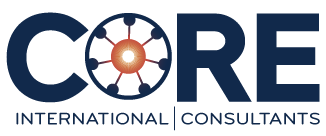In the opening article of our series Organizations that Work we established that poor organization design gets in the way of creating value. We also proposed that restructuring in a deliberate way, using a proven process and scientifically valid tools, will align structure with strategy and result in superior value creation.
Our clients (who are all very smart and accomplished senior executives) are typically not organization design experts. Nevertheless, from time to time their business acumen and experience tells them that “something’s not working”, or “something’s not right”.
We call those things Pain Points.
Pain Points are the symptoms through which poor organization design reveals itself. They are how bad design “shows up” in an organization. In this blog we’ll present 3 of the 6 Pain Points that we see most often, and link to a client-specific case study that walks you through how we helped our client address their issues.
In each case study, we will share:
- the symptoms of structure misalignment experienced by our client;
- our approach to organization design leveraging scientifically proven design principles, and;
- the high impact business results achieved by our clients through the alignment of structure and strategy.
Pain Point #1: Strategic Misfires
Much has been written about why organizations fail to deliver their strategies. It’s not unusual for an organization to meticulously craft a strategy, only to fail to deliver its intended outcomes. It’s hard to execute on a strategy that calls for marketplace agility if you’re structured in hardened organizational silos. It’s hard to deliver on a strategy of customer-centricity when no one in the organization is accountable for the end-to-end customer experience except for the CEO. Poor organization design is often a root cause of failure to execute on the strategy.
In this case study, we explore how the organization structure of a global pharmaceutical company prevented the execution of a new strategy, and how a new structure designed and implemented to support the delivery of that strategy returned significant bottom line performance improvements.
The customer-centric strategy, which had been stalled for four years, was implemented in six months, and operating costs were reduced from $104M to $97M.
For a more detailed read of this case study, click here: Aligning Structure with Strategy
Pain Point #2: The Innovation Gap
Not every innovation is an earth-shattering breakthrough. Innovation happens at many levels—from the shop floor to the C-suite. Distinct levels of work contribute to innovation differently. A properly structured and well-managed organization encourages, supports, and enables innovation at every level. Front-line roles contribute to innovation in ways that affect the quality and speed of service delivery. Senior leadership roles drive new product, service, market and sometimes business model innovations. Poor organizational design or a weak management system can stifle innovation—in some cases, even stop it before it starts.
In this case study, we explore how a well-designed structure enabled a global organization to achieve innovative growth and value creation. This (now global) company, founded in Canada, had captured a dominant share of its domestic market and was poised to expand globally. The new strategy called for customer, market, and product-centric focus and innovation at the Business Unit level. However, the company was structured around process innovation at the plant level. A new organizational structure allowed this company to increase its focus on the needs of customers and markets while at the same time becoming substantially more responsive and agile.
For a more detailed read of this case study, click here: Structuring for Innovation and Growth
Pain Point #3: Low Employee Engagement
We often get asked why engagement projects do not have a higher and more sustainable impact on employee engagement and business outcomes. The benefits of an engaged workforce are clear: increased productivity, decreased turnover, and improved business results.
Two conditions are most frequently expressed by highly engaged employees across industries:
- Clear role accountabilities and aligned decision authorities. Employees want to do meaningful work and they need clarity on their accountabilities and their decision authorities so that they can take action.
- An effective relationship with their manger. Employees expect their managers to provide them direction and meaningful feedback so that they can succeed in their roles, and provide managerial support in achieving them.
Organizations that don’t do both create conditions where employee engagement suffers.
This case study looks at how a focus on clarifying accountabilities, decision authorities and cross-boundary relationships helped our client, the Call Centre division of a leading Canadian financial services organization. The division was experiencing high turnover, low productivity and low levels of customer service and satisfaction. We developed and implemented an organization structure to focus more specifically on a seamless customer experience across all business units. We then partnered with the leaders to develop the implementation plan and roll out the new organization. Paired with a program to enhance managerial effectiveness, our approach enabled this Canadian financial services organization to create a foundation for sustainable, high levels of employee engagement while increasing productivity by 70% and reducing turnover by 3.5%.
For a more detailed read of this case study, click here: Structuring to Drive Sustainable Engagement
This blog is part of our ongoing series: Organizations that Work. Read part one, “The Definitive Guide to Aligning Structure with Strategy” here.
Every Tuesday over the next few months, we will be posting blogs that take you from the pain of poor organization design, to identifying the root causes, to the benefits of undertaking strategic organization review. We will discuss the steps needed to effectively align your structure and work with your strategy, and we’ll discuss the processes that take out the guess work and help you to get it done. Through it all we will discuss how to lead the change from start to finish.
For more, please follow us on LinkedIn or book a call directly with one of our partners.

